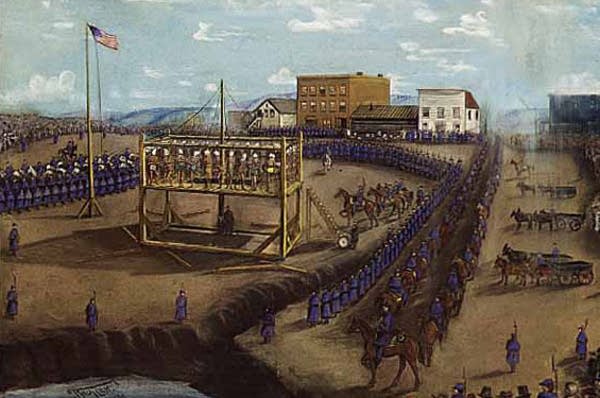US-Dakota War exhibit heads to Smithsonian
Go Deeper.
Create an account or log in to save stories.
Like this?
Thanks for liking this story! We have added it to a list of your favorite stories.

ST. PETER, Minn. (AP) -- An exhibit commemorating the Dakota-U.S. war of 1862 is heading to the Smithsonian Institution.
The 12-panel exhibit depicts a range of events, beginning from when the Native Americans and settlers first met and culminating with their recent efforts to reconcile, the Mankato Free Press reported.
The six-week war took place in southern Minnesota and resulted in the hanging of 38 Dakota in Mankato.
"Commemorating Controversy: The Dakota-U.S. War of 1862" was created by the Nicollet County Historical Society and students and faculty at Gustavus Adolphus College.
Turn Up Your Support
MPR News helps you turn down the noise and build shared understanding. Turn up your support for this public resource and keep trusted journalism accessible to all.
"We're really excited the Smithsonian is going to host it," said Ben Leonard, who runs the historical society.
The idea for the exhibit grew out of a Gustavus class taught by Leonard and professor Elizabeth Baer. The final project was for students to create the content for the exhibit.
"The goal was to explore the history of the war. We knew we didn't have years to do this, and these were students who didn't have a lot of prior knowledge of events," Leonard said. "We hoped it would teach people about the Dakota War, but we weren't trying to speak for the Dakota people or for those who have ancestors who fought or died in the war."
The exhibit caught the eye of Kevin Gover, who's in charge of the Smithsonian's National Museum of the American Indian in Washington, D.C. He came to deliver a speech on campus in January and suggested the Leonard send information to the museum's exhibition committee.
"They went through a bunch (of applications) and they chose ours," Leonard said. "They looked at all our panels. I think they vet the exhibits quite thoroughly."
The exhibit will be shipped to the Smithsonian at the end of the year. It will be on display through mid-2015.
It will first be displayed in New York at the Smithsonian's American Indian Heye Center. Then it will be housed at Smithsonian's Washington, D.C., museum.



